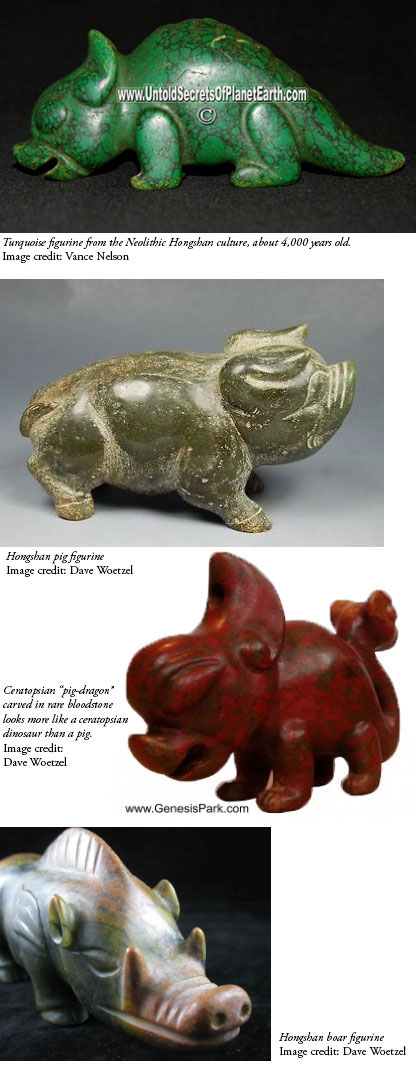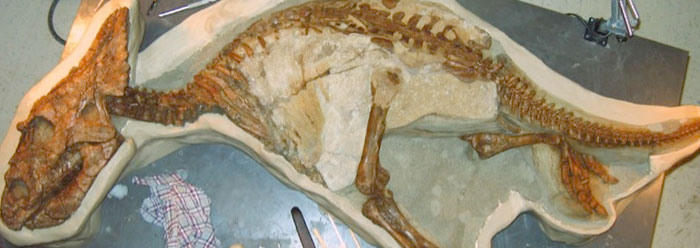Dinosaur Youngster Looks Like Dragon Figurines
by Brian Thomas, M.S. *

Phil Currie, one of Canada's leading paleontologists, helped excavate a virtually complete skeleton of what is likely the youngest ceratopsian dinosaur ever found. Ceratopsians include the famousTriceratops, but others within the group possessed different body sizes, head frills and various numbers of horns.
Juvenile dinosaurs are rare enough, but to find a three-year-old almost completely intact specimen—only its front legs are missing—is so rare that it may be one of a kind. Currie toldLiveScience, "The big ones just preserve better."1Nobody is quite sure why.
This juvenile from Canada had no horns, and the fossil looked eerily familiar. Remarkably, ancient burial artifacts from within what is today northeastern China bear a striking resemblance to this juvenile ceratopsian fossil find. The Hongshan culture expertly carved figurines into the shapes of animals, dragons and people out of valuable materials like jade.
Auction houses sell the dinosaur-like carvings as "pig-dragons" because of the pig-like noses on some of the figurines. But some Hongshan figurines are actually pigs, clearly showing that the carvers knew their subject matter.
Some of their ancient depictions are difficult to identify, but others are plain to see. The dragon figurines don't resemble any standard zoo animal alive today, and one wonders how the carvers could have carved the animal look-alikes without looking at the live animal. Presumably, ancient Chinese artists did not have access to fossils in Canada or even Mongolia where paleontologists found protoceratops fossils in the mid-20th century, nor would one expect the artists to have developed the expertise to reconstruct whole animals from mere skeletal fragments.
Plus there's the question of motivation. Why would they portray skeletal remains as a living animal?
Further, what are the chances that any ancient culture—Chinese or not—would have stumbled upon such a rare fossil, then used it as a template to carve figurines right alongside those of other living animals and people?
At this point, the best explanation for these jade figurines may be that long ago peoples expertly carved likenesses of then-living dinosaurs—even juvenile ceratopsians.
References
- Ghose, T. Baby Dinosaur Skeleton Unearthed in Canada. LiveScience. Posted on livescience.com November 25, 2013, accessed November 25, 2013.
Image credit: Copyright © 2013 LiveScience. Adapted for use in accordance with federal copyright (fair use doctrine) law. Usage by ICR does not imply endorsement of copyright holders.
* Mr. Thomas is Science Writer at the Institute for Creation Research.
Article posted on December 9, 2013.

No comments:
Post a Comment